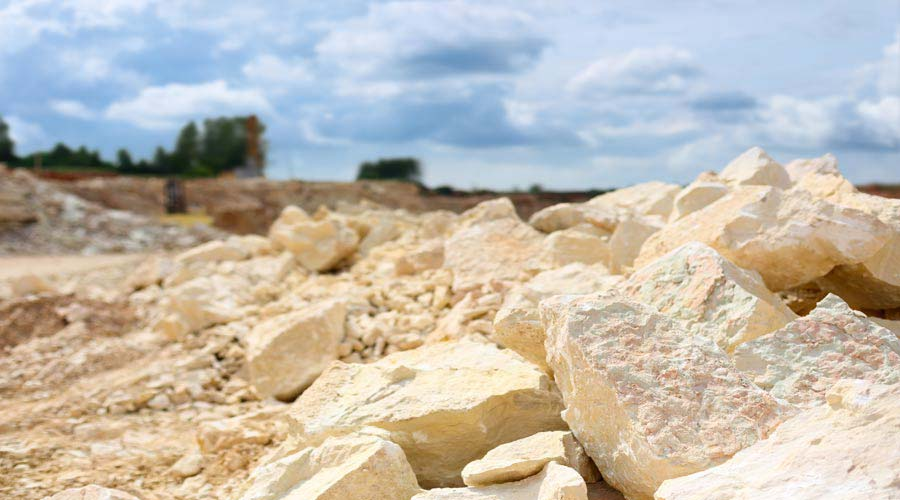Limestone Reclassified as Major Mineral | 15 Oct 2025
The Ministry of Mines has officially reclassified all limestone as a major mineral, removing earlier end-use distinctions and promoting ease of doing business.
- Earlier, limestone used for lime in construction was a minor mineral, while other uses were classified as major mineral.
- Limestone: It is a sedimentary rock mainly composed of calcium carbonate (CaCO₃), sometimes containing dolomite, clay, iron carbonate, feldspar, pyrite, and quartz.
- Most limestones have a granular texture, with grains ranging from microscopic to visible shell fragments.
- Significance: Limestone is rich in fossils, aiding the study of Earth’s history, and serves as a key source of phosphate for fertilizers.
- When heated to 900–1000°C, limestone produces lime, which is widely used in glass manufacturing, agriculture, and various industries, while certain varieties are valued as building stones for flooring, facings, and monuments.
- Reclassifying limestone as a major mineral allows free use in industries, boosting production, employment, and overall economic growth.
Major and Minor Minerals
- Major minerals are those listed in the schedule of the Mines and Minerals (Development and Regulation) Act, 1957 (MMDR Act) commonly including Calcite, Clay, Coal, Quartz, and others, and are typically used in large-scale industrial applications.
- Minor minerals, as defined under the Minor Mineral Concession Rules framed by State Governments under the MMDR Act, 1957, include low-value materials primarily used in construction and small-scale industries.
- They include resources such as building stones, gravel, ordinary clay, and decorative stones.
- Additionally, any other mineral notified by the Central Government as a minor mineral also falls under this category.
| Read more: Mines and Minerals Amendment Bill, 2025 |

